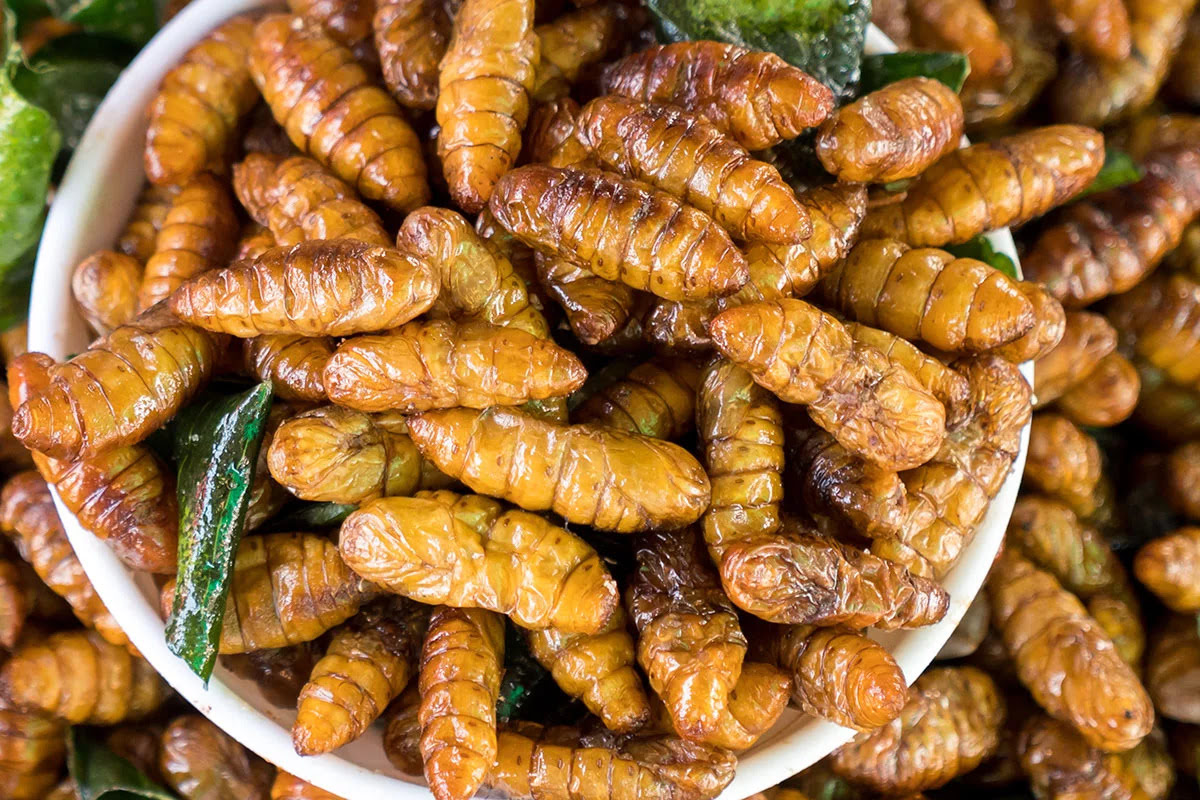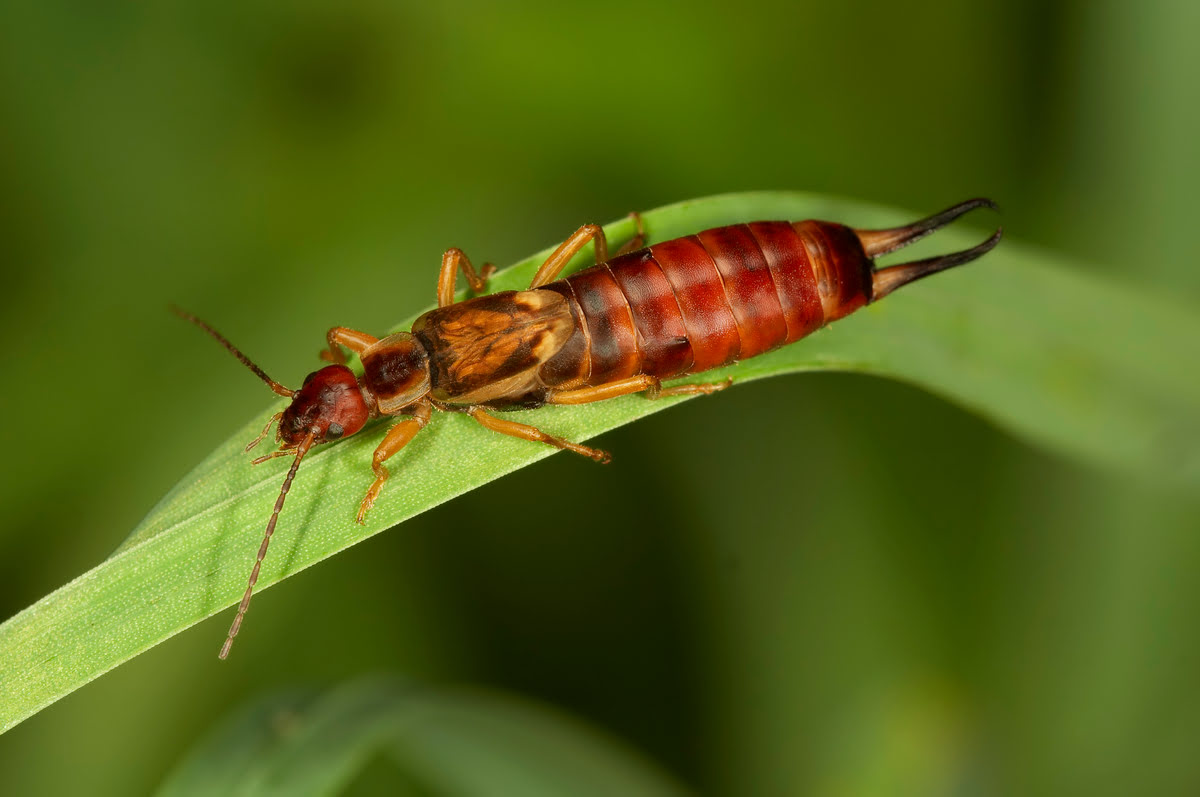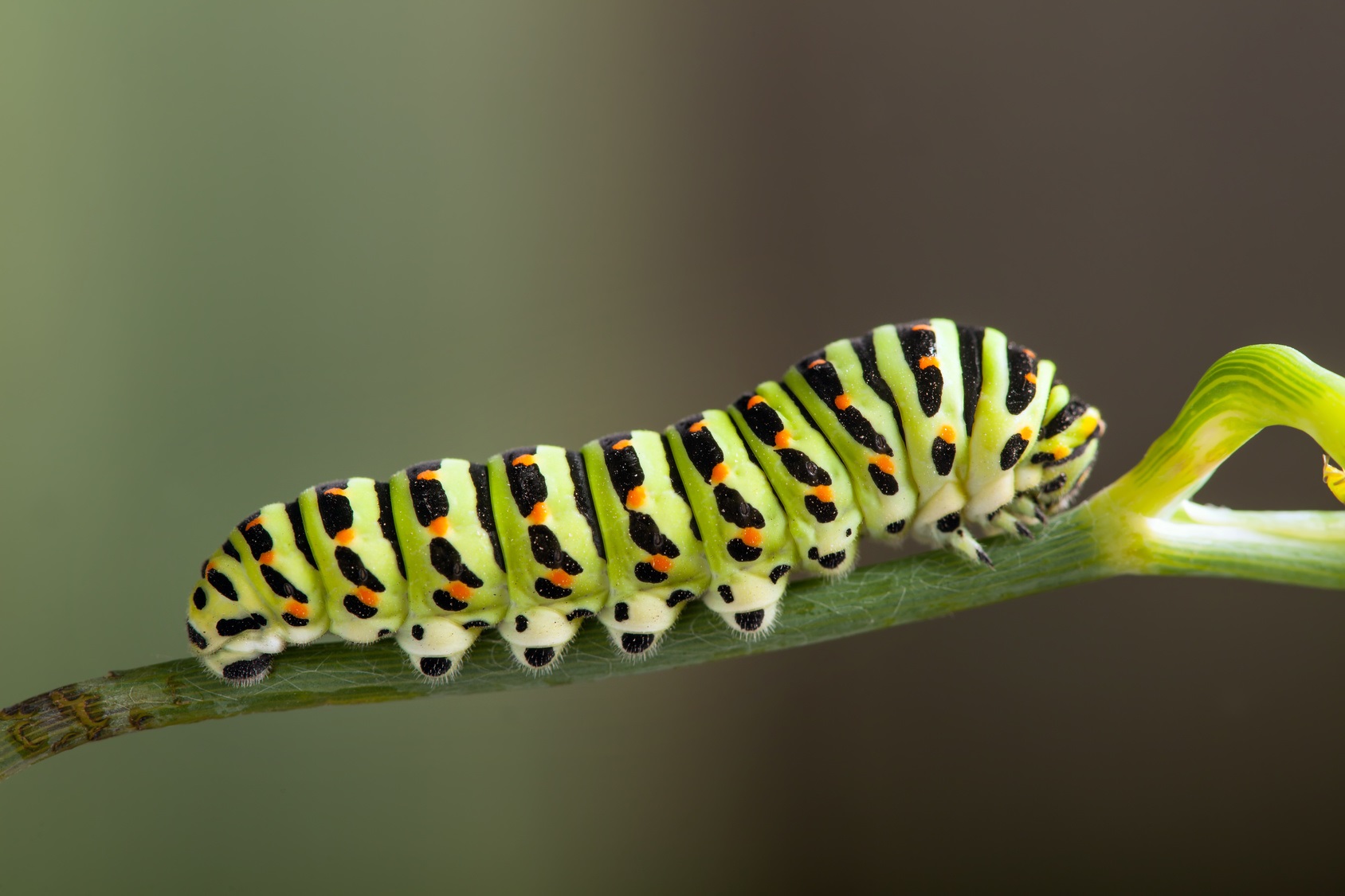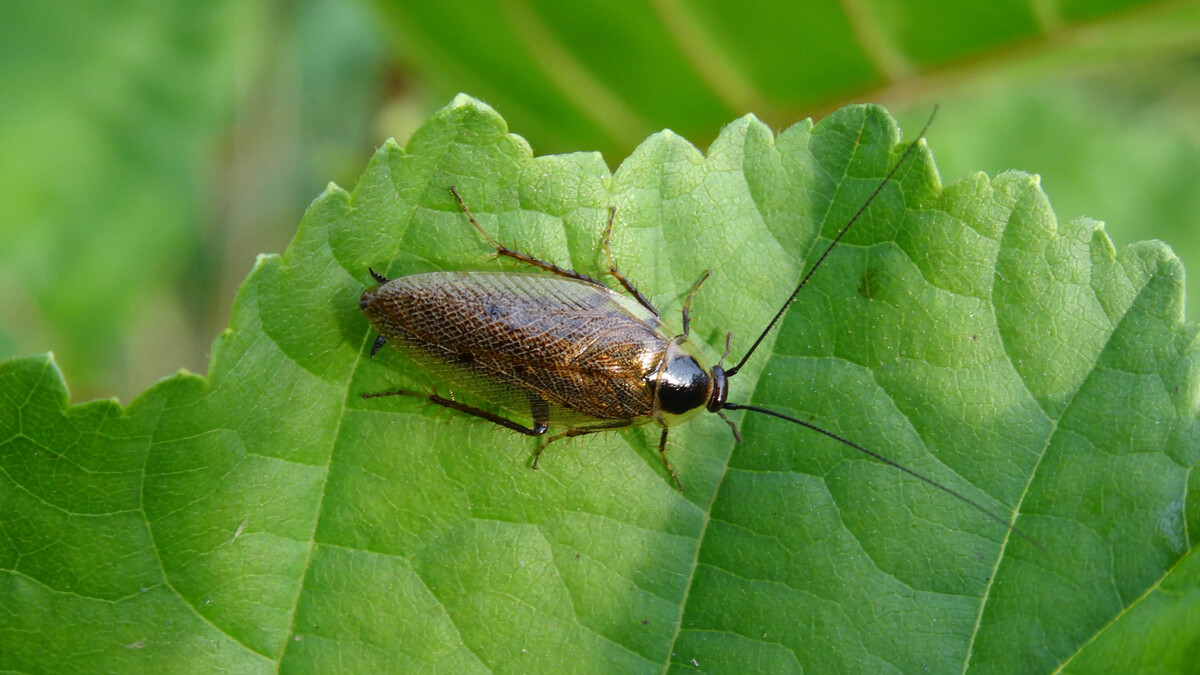Home>Gardening News and Trends>Latest News>What Order Of Insects Is Dragonflies?
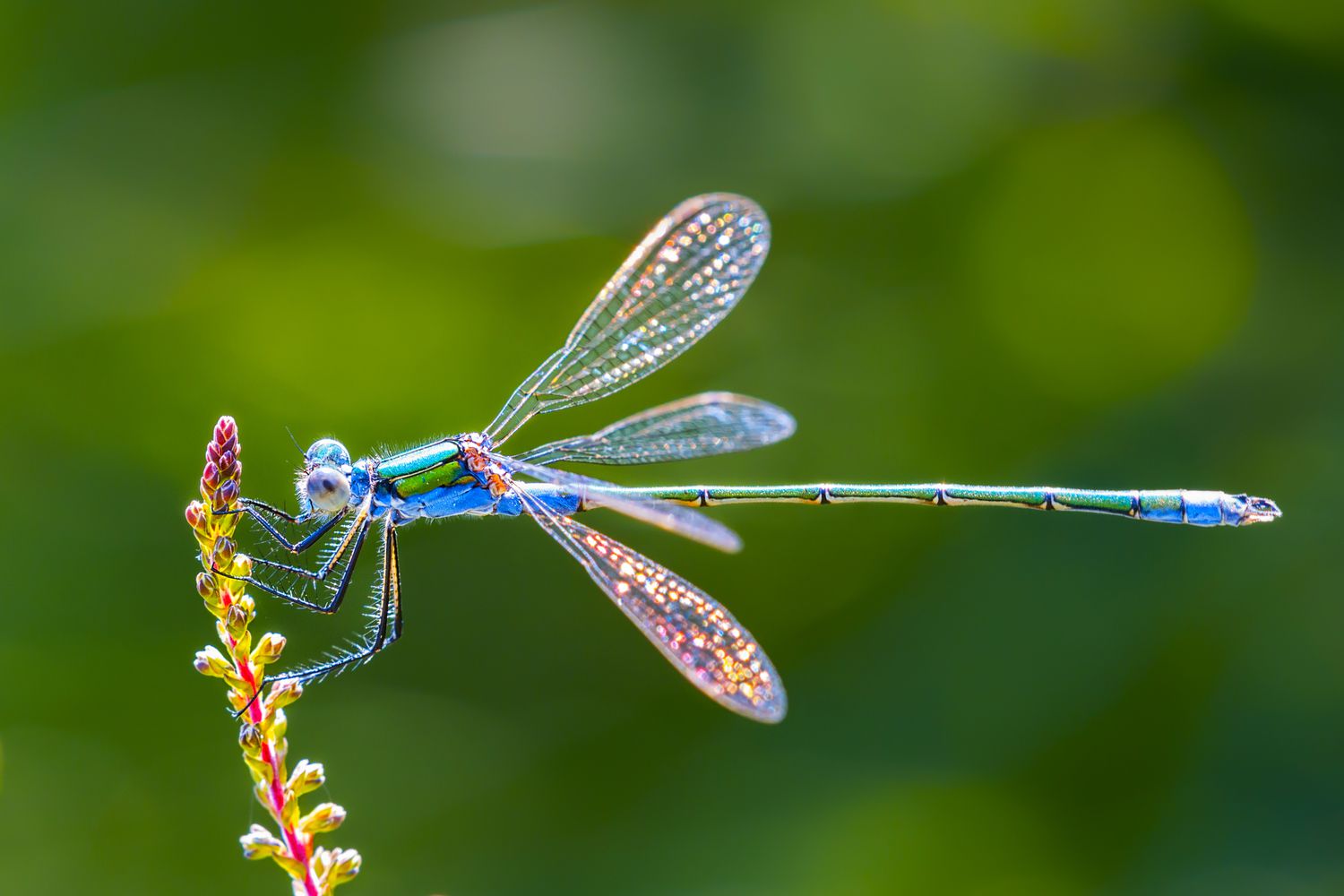

Latest News
What Order Of Insects Is Dragonflies?
Published: December 8, 2023
Discover the Latest News on the Order of Insects Dragonflies. Learn about their fascinating characteristics, habitat, and behavior in this comprehensive guide.
(Many of the links in this article redirect to a specific reviewed product. Your purchase of these products through affiliate links helps to generate commission for Chicagolandgardening.com, at no extra cost. Learn more)
Table of Contents
Introduction
In the world of insects, dragonflies are fascinating creatures that capture our attention with their vibrant colors, intricate wing patterns, and aerial acrobatics. These agile insects have a long history, dating back millions of years, and have evolved to be efficient predators in the natural world.
But what order of insects do dragonflies belong to? Understanding the taxonomy and classification of dragonflies is not only important for scientific purposes but also crucial for conservation efforts and understanding their ecological roles.
Different insect species have been classified into various orders based on their distinct characteristics and evolutionary history. The order that dragonflies belong to is Odonata, which also includes damselflies. Odonata is derived from the Greek words “odon,” meaning tooth, and “ata,” meaning having, referring to the insects’ strong jaws.
Dragonflies have captured the imagination and interest of humans for centuries, appearing in folklore, art, and literature. Their striking appearance and behavior have made them a popular subject of study for entomologists and nature enthusiasts alike. Join us as we delve into the world of dragonflies and unveil the secrets of their taxonomy, behavior, and conservation.
Importance of Classifying Insects
The classification of insects serves as a fundamental tool in scientific research and understanding. By systematically categorizing insects into different orders, families, and species, scientists are able to study their evolutionary relationships, behavior, and ecological roles. The classification of insects, including dragonflies, has several significant implications:
- Identification and Organization: Classifying insects enables scientists and researchers to identify and organize the vast number of insect species in a logical and systematic manner. It provides a framework for categorizing and describing their physical characteristics, habitats, and behaviors. This organized approach allows for effective communication and collaboration among experts in the field.
- Ecosystem Studies: Insects play crucial roles in various ecosystems. By classifying them, scientists gain insights into their ecological functions, such as pollination, decomposition, and pest control. Understanding the relationships between insect species and their habitats helps in assessing the health and balance of ecosystems, ultimately aiding conservation efforts.
- Species Discovery: Classifying insects facilitates the discovery of new species. Many insect species remain undiscovered or poorly studied, especially in tropical regions. By identifying and categorizing them, scientists uncover valuable insights into biodiversity and can develop conservation strategies to protect these vulnerable species and their habitats.
- Evolutionary Studies: Classification allows scientists to trace the evolutionary history of insects. By examining their shared characteristics and genetic relationships, researchers can unravel the evolutionary patterns, adaptations, and diversification of insect species over millions of years. This knowledge aids in understanding the mechanisms of evolution and the processes that shape the vast array of insect life on Earth.
- Conservation Efforts: The classification of insects, particularly those at risk of extinction or in need of conservation, provides a foundation for developing targeted conservation plans. By identifying threatened species and understanding the factors that contribute to their decline, scientists can implement measures to protect their habitats, control invasive species, and raise awareness about the importance of insect conservation.
Overall, the classification of insects, including dragonflies, serves as a vital tool in our quest to unravel the mysteries of the natural world. It facilitates scientific research, aids in ecosystem management, contributes to species discovery, illuminates evolutionary relationships, and drives conservation efforts. The study of insect taxonomy opens up a fascinating realm of knowledge, enabling us to appreciate the remarkable diversity and intricate interconnectedness of the insect world.
Overview of Dragonflies
Dragonflies, belonging to the order Odonata, are ancient insects that have been inhabiting Earth for over 300 million years. With their unique appearance and incredible flying abilities, these fascinating creatures have captivated the attention of both scientists and nature enthusiasts.
Dragonflies are often recognized by their elongated bodies, large compound eyes, and strong, transparent wings. They come in a variety of sizes and colors, ranging from small, delicate species with vibrant hues to larger, sturdy dragonflies with earth-toned shades. Their wingspan can range from a few centimeters to over 15 centimeters, depending on the species.
One of the distinguishing features of dragonflies is their ability to maneuver gracefully in flight. They have two pairs of intricately veined wings that can beat independently, allowing them to hover, fly backward, and change direction rapidly. This agility enables them to hunt and catch prey mid-air with remarkable precision.
Dragonflies are primarily found near freshwater habitats, such as lakes, ponds, and slow-moving rivers. They require aquatic environments for their early stages of life, as their larvae, known as nymphs, live in water. These nymphs are fierce predators, feeding on small aquatic organisms such as insects and tadpoles.
As adults, dragonflies continue to exhibit predatory behavior. They feed on a wide variety of insects, including mosquitoes, flies, and even other smaller dragonflies. Believed to be beneficial to humans, dragonflies act as natural pest control agents, helping to keep populations of nuisance insects in check.
Dragonflies have a unique mating behavior. Females lay their eggs on aquatic vegetation or even directly into water, and males guard and defend their chosen territory to attract females. Once eggs are laid, they hatch into nymphs, which spend a significant amount of time underwater before undergoing metamorphosis and emerging as adult dragonflies.
With their remarkable longevity, dragonflies have earned a place in folklore and mythology. They are often associated with transformation, speed, and strength. In some cultures, dragonflies are regarded as symbols of joy, prosperity, and good luck.
Dragonflies serve as a bridge between land and water ecosystems and play crucial roles in maintaining the balance of these habitats. Their presence indicates the health of aquatic environments, and their predation helps control insect populations, preventing outbreaks of pests.
Now that we have an overview of dragonflies, let’s explore their taxonomy and delve deeper into the fascinating world of these ancient insects.
Taxonomy of Dragonflies
The taxonomy of dragonflies is a systematic approach that classifies these insects into different groups based on their evolutionary relationships, physical characteristics, and genetic similarities. Understanding the taxonomy of dragonflies helps scientists to categorize and study their diverse species, enabling a deeper understanding of their ecology and behavior.
Dragonflies belong to the order Odonata, which is further divided into two suborders: Anisoptera and Zygoptera. Anisoptera includes the true dragonflies, while Zygoptera encompasses the damselflies.
Within the suborder Anisoptera, dragonflies are classified into families, which are further divided into genera and species. There are approximately 5,000 known species of dragonflies worldwide.
These families include some well-known genera such as Aeshna, Libellula, and Pantala. Each genus consists of closely related dragonfly species that share common characteristics and traits.
The classification of dragonflies is based on both their physical characteristics and genetic information. Physical features such as wing shape, size, and color patterns are used to distinguish between different dragonfly families, genera, and species. Genetic studies help in understanding the evolutionary relationships between different dragonfly groups.
Taxonomists rely on various tools and techniques to classify and identify dragonflies accurately. These include the examination of wing venation, body structure, and genitalia, as well as molecular analysis to determine genetic relatedness.
It is worth noting that the taxonomy of dragonflies is continually evolving as new discoveries are made and scientific understanding advances. As researchers uncover new species or reevaluate existing ones, the classification and relationships within the Odonata order may be revised.
Efforts to catalog and document dragonfly species are ongoing, with global initiatives such as citizen science projects and collaborations between researchers and enthusiasts. These initiatives contribute to a better understanding of dragonfly biodiversity and enrich the knowledge of their taxonomy.
By studying the taxonomy of dragonflies, scientists gain insights into their evolutionary history, patterns of diversification, and ecological roles. This information is crucial for conservation efforts, as it helps identify endangered species and preserve their habitats. Additionally, understanding the taxonomy of dragonflies allows for more accurate communication and collaboration among researchers and enthusiasts worldwide.
Now that we have explored the taxonomy of dragonflies, let’s delve into their fascinating characteristics and behaviors.
Characteristics of Dragonflies
Dragonflies possess a captivating set of characteristics that set them apart from other insects. From their striking physical features to their unique behaviors, these traits contribute to their remarkable adaptability and success as predators in the natural world.
One of the most noticeable characteristics of dragonflies is their distinct body structure. They have elongated bodies divided into three main segments: the head, thorax, and abdomen. The head houses their compound eyes, which provide them with exceptional vision and allow them to detect movements in their surroundings with remarkable precision.
Dragonflies are known for their large and transparent wings. These wings are delicately veined, providing both strength and flexibility for their impressive flight abilities. They can beat their wings independently, enabling them to hover, fly in any direction, and even perform impressive acrobatics mid-air.
The vibrant colors and patterns displayed on dragonflies’ bodies are another remarkable characteristic. These colors serve various purposes, including attracting mates and warning potential predators of their toxicity. The patterns on their wings often feature intricate details, acting as camouflage and helping them blend into their surroundings.
Dragonflies possess excellent hunting skills, thanks to their exceptional vision and agility. They are skilled predators and feed primarily on insects such as mosquitoes, flies, and small butterflies. Using their strong jaws, dragonflies catch their prey in mid-air, snatching them with lightning-fast speed and precision.
Another noteworthy characteristic of dragonflies is their ability to undergo both aerial and aquatic stages of their lives. Starting as eggs laid in or near water, dragonflies hatch into nymphs, also known as naiads. These nymphs are well-adapted to their aquatic environment, with specialized appendages for swimming and catching prey.
During the nymph stage, dragonflies undergo a series of molts, shedding their exoskeleton as they grow. This process continues until the nymphs reach maturity. Once they are ready to emerge as adults, dragonflies crawl out of the water and undergo a final molt, revealing their fully formed wings and vibrant colors.
Dragonflies are known for their fierce territorial behavior, particularly among males. They often establish and defend territories near bodies of water, using impressive aerial displays to chase away rival males and attract females for mating.
Dragonflies have existed for millions of years and have evolved unique adaptations that contribute to their success as predators. Their physical characteristics, flight abilities, hunting skills, and dual life stages make them extraordinary insects in the natural world.
Now that we have explored the remarkable characteristics of dragonflies, let’s delve into their fascinating life cycle.
Life Cycle of Dragonflies
The life cycle of dragonflies is a fascinating process that encompasses both aquatic and aerial stages. From the moment they hatch from eggs to their final metamorphosis into adult dragonflies, these insects undergo several transformations, each with its own distinct characteristics.
The life cycle of dragonflies begins when females lay their eggs in or near bodies of water, such as ponds, lakes, or rivers. The female carefully selects suitable locations for egg deposition, often choosing aquatic plants or other structures above or below the water’s surface.
Once the eggs are laid, they hatch into nymphs or naiads. Nymphs are specialized for an aquatic lifestyle and spend the majority of their lives underwater. They have elongated bodies, six legs, and a unique extending lower lip called a labium, which they use to capture and consume their prey.
During their nymph stage, which can last anywhere from a few months to several years, dragonfly nymphs undergo several molts. Each molt allows them to shed their old exoskeleton and grow larger. They are voracious predators and feed on small aquatic organisms, such as insect larvae, tadpoles, and even small fish.
As nymphs approach maturity, they go through a final molt, emerging as winged adults. This process is known as emergence or metamorphosis. The adult dragonfly remains in its exoskeleton for some time, allowing its wings to fully expand and dry before taking flight.
Adult dragonflies, now fully formed and capable of flight, become prominent members of the ecosystem. They venture away from the water, establishing territories near their aquatic birthplace. Males primarily defend territories to attract females for mating.
During the mating process, the male dragonfly transfers sperm to a specialized pouch located at the tip of his abdomen. The female then curls her abdomen forward, allowing the male to transfer the sperm to her reproductive organs.
Once this process is complete, the female searches for suitable locations to lay her eggs, often in or near water bodies. The cycle then repeats as the eggs hatch into nymphs, and the life cycle of dragonflies continues.
The length of the life cycle of dragonflies varies among species, environmental conditions, and geographical locations. Some species may complete their life cycle within a single year, while others may take several years to reach maturity.
The life cycle of dragonflies showcases the incredible adaptations and transformations these insects undergo. From their aquatic nymph stage to their spectacular emergence as adults capable of flight, dragonflies exemplify the marvels of nature’s remarkable life cycles.
Now that we have explored the life cycle of dragonflies, let’s move on to discuss their habitat and distribution.
Habitat and Distribution of Dragonflies
Dragonflies are widely distributed across the globe, inhabiting a variety of habitats ranging from tropical rainforests to temperate wetlands and even arid deserts. Their adaptability to different environments is a testament to their success as a group of insects.
One of the key requirements for dragonflies is access to freshwater habitats. They are typically found near bodies of water such as lakes, ponds, rivers, and streams, as these environments provide suitable breeding grounds for their aquatic nymphs.
Dragonflies prefer still or slow-flowing water bodies with abundant vegetative cover. This vegetation provides them with perching spots, shelter, and areas for oviposition (egg-laying). It also serves as a source of food, attracting insects for dragonflies to prey upon.
While dragonflies are often associated with freshwater habitats, some species have adapted to other environments. For example, certain species can be found in salt marshes, coastal areas, and even high-altitude mountain streams.
The distribution of dragonflies is influenced by factors such as temperature, humidity, and availability of suitable breeding sites. In warmer regions, dragonfly diversity tends to be higher, with a greater variety of species. However, they can be found in various climatic conditions worldwide.
Tropical rainforests are known to harbor a rich diversity of dragonfly species. The warm and humid conditions provide favorable environments for their growth and reproduction. These habitats often boast a high abundance and variety of insect prey, allowing dragonflies to thrive.
In temperate regions, dragonflies are most active during the warmer months, typically from spring to fall. They take advantage of the favorable weather to feed, breed, and complete their life cycle. However, during the colder winter months, they may enter a dormant phase or migrate to warmer areas.
Desert regions may seem unlikely places to find dragonflies, but these insects have adapted to survive in such environments as well. Some desert-adapted species have evolved to conserve water and seek out water sources in oasis-like areas.
Human activities can have a significant impact on the habitat and distribution of dragonflies. Habitat destruction, pollution, and climate change can disrupt their ecosystems and threaten their survival. Conservation efforts are crucial in preserving their habitats and maintaining suitable conditions for these remarkable insects.
With their widespread distribution and adaptability to various habitats, dragonflies play essential ecological roles. As predators, they help control insect populations, including nuisance species such as mosquitoes. They also serve as indicators of environmental health, as their presence indicates the quality of freshwater ecosystems.
Now that we have explored the habitat and distribution of dragonflies, let’s delve into their behavior and feeding habits.
Behavior and Feeding Habits of Dragonflies
Dragonflies exhibit fascinating behaviors and feeding habits that make them unique among insects. Their agility, hunting skills, and intricate mating rituals showcase their remarkable adaptations and intricate ecological roles.
Dragonflies are highly skilled predators, relying on their exceptional vision, speed, and agility to capture their prey. They are primarily active during daylight hours, using their broad spectrum of vision to detect movement and spot potential targets.
When hunting, dragonflies employ a sit-and-wait strategy or actively patrol their territories. Some species perch on vegetation or other objects near water, waiting for prey to come within striking range. Others actively patrol, flying back and forth to search for potential victims.
Once a dragonfly spots its prey, it initiates a swift and precise attack. Using their strong wings and remarkable flight capabilities, they swoop down and snatch their prey with their spiky legs. Their keen eyesight and lateral vision allow them to accurately judge the distance and trajectory of their target.
The diet of dragonflies primarily consists of other insects. They feed on a wide variety of small flying insects such as mosquitoes, flies, butterflies, and even smaller dragonflies. Their predatory behavior has earned them the nickname of “mosquito hawks” or “mosquito eaters.”
Dragonflies are also known for their territorial behavior, particularly among males. They establish and defend territories near their preferred breeding habitats. Males perform aerial displays to attract females and ward off rival males, engaging in acrobatic flights and engaging in territorial battles.
Mating in dragonflies is a complex and fascinating process. Once a male successfully attracts a female, they engage in a series of maneuvers known as the “mating wheel.” The male clasps the female behind her head with specialized claspers at the end of his abdomen, forming a wheel-like structure. The female then curls her abdomen forward, allowing the male to transfer sperm to her reproductive organs.
After mating, the female searches for suitable locations to lay her eggs, often in or near water bodies. She may fly low over the water surface, dipping her abdomen to deposit the eggs directly into the water or attaching the eggs to aquatic vegetation. This ensures the survival and development of the next generation of dragonflies.
Dragonflies exhibit a wide range of behavioral adaptations that contribute to their success as predators and their role in maintaining the balance of ecosystems. They play a vital role in controlling insect populations and are indicators of the health and biodiversity of freshwater habitats.
Now that we have explored the behavior and feeding habits of dragonflies, let’s turn our attention to the threats they face and the importance of their conservation.
Threats and Conservation of Dragonflies
Dragonflies, like many other species, face various threats to their survival and well-being. Human activities, habitat loss, pollution, and climate change pose significant challenges to dragonfly populations. Conservation efforts are crucial in safeguarding their habitats and ensuring the long-term survival of these remarkable insects.
One of the key threats to dragonflies is habitat loss. The destruction and degradation of wetlands, rivers, and other freshwater ecosystems directly impact their breeding grounds and food sources. Urbanization, agriculture, and the construction of infrastructure contribute to the loss and fragmentation of their habitats.
Pollution, particularly water pollution, is another major threat to dragonflies. Pesticides, herbicides, fertilizers, and other chemical pollutants can contaminate their aquatic habitats, affecting both the nymphs and the availability of prey. Increased sedimentation and nutrient runoff also disrupt the ecological balance of their ecosystems.
Climate change poses additional challenges to dragonflies. Alterations in temperature and precipitation patterns can disrupt their reproductive cycles, affect their food availability, and impact their migratory patterns. Rising global temperatures may introduce new competitors, predators, and diseases, further threatening their populations.
To address these threats and protect dragonflies, conservation measures are necessary. These efforts may include:
- Habitat preservation and restoration: Protecting and restoring wetlands and other aquatic habitats where dragonflies breed and feed is essential. Conserving these areas not only benefits dragonflies but also supports the biodiversity and ecological balance of the entire ecosystem.
- Water quality management: Implementing measures to reduce water pollution, such as regulating the use of chemicals and promoting sustainable agricultural practices, helps maintain suitable conditions for dragonflies to thrive.
- Climate change mitigation: Addressing the root causes of climate change and implementing strategies to reduce greenhouse gas emissions can help mitigate its impacts on dragonfly populations. Promoting sustainable energy sources and encouraging carbon footprint reduction are vital steps in this endeavor.
- Public awareness and education: Raising awareness about the importance of dragonflies and their ecological roles can foster public support for their conservation. Education programs, citizen science initiatives, and community involvement can contribute to the understanding and protection of these insects.
- Data collection and monitoring: Continued research and monitoring efforts are essential to track the populations, distribution, and health of dragonflies. Citizen science initiatives can play a valuable role in collecting data and contributing to scientific knowledge about these insects.
Conserving dragonflies not only benefits the survival of these captivating insects but also contributes to the overall health and biodiversity of freshwater ecosystems. Protecting their habitats and addressing the threats they face are crucial steps in preserving their populations for future generations to enjoy.
Now that we understand the threats and conservation efforts surrounding dragonflies, let’s reflect on the fascinating world of these ancient insects before concluding our exploration.
Conclusion
Dragonflies, with their vibrant colors, intricate wing patterns, and agile flight, captivate our attention and spark our curiosity. These ancient insects, belonging to the order Odonata, hold a significant place in the natural world, playing vital ecological roles and serving as indicators of environmental health.
Throughout this article, we have explored the taxonomy, characteristics, behaviors, and life cycle of dragonflies. From their unique physical traits to their remarkable hunting skills, dragonflies showcase adaptations that make them efficient predators.
Dragonflies reside in a variety of habitats worldwide, with a preference for freshwater environments. They require stable ecosystems and abundant prey sources, highlighting the importance of conserving their habitats and addressing threats such as habitat loss, pollution, and climate change.
Conservation efforts that prioritize habitat preservation, water quality management, and climate change mitigation are essential for safeguarding dragonfly populations. Additionally, public awareness, education, and data collection contribute to our understanding and protection of these remarkable insects.
By appreciating and conserving dragonflies, we not only protect their populations but also preserve the biodiversity and ecological balance of freshwater ecosystems. Their ability to control insect populations and serve as indicators of environmental health highlights their significance in maintaining the delicate balance of nature.
So, the next time you spot a darting dragonfly by the water’s edge or observe their graceful flight in the air, take a moment to marvel at the ancient presence and ecological importance of these fascinating creatures.
